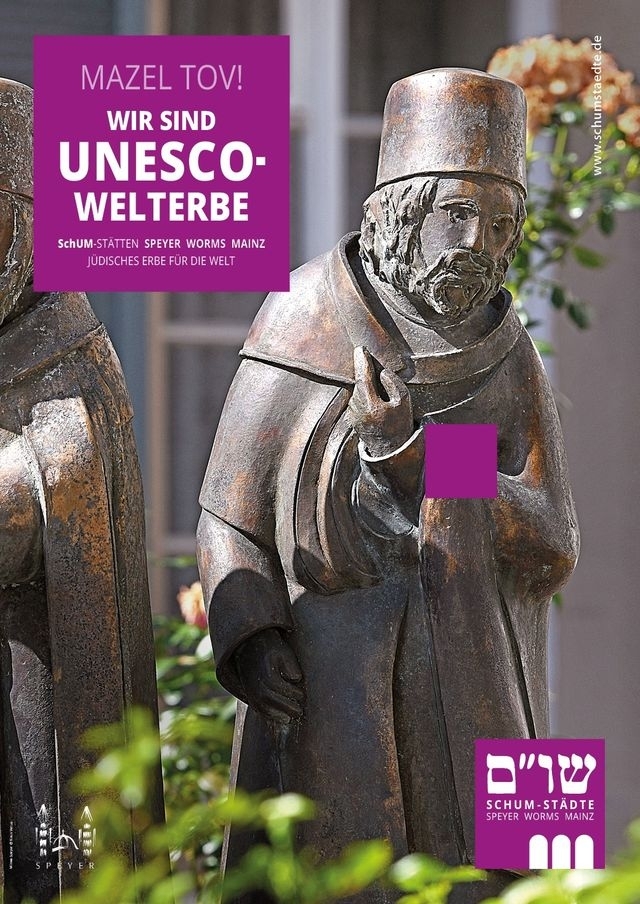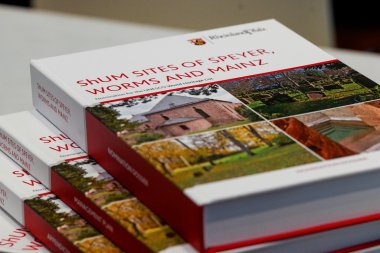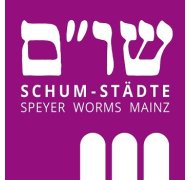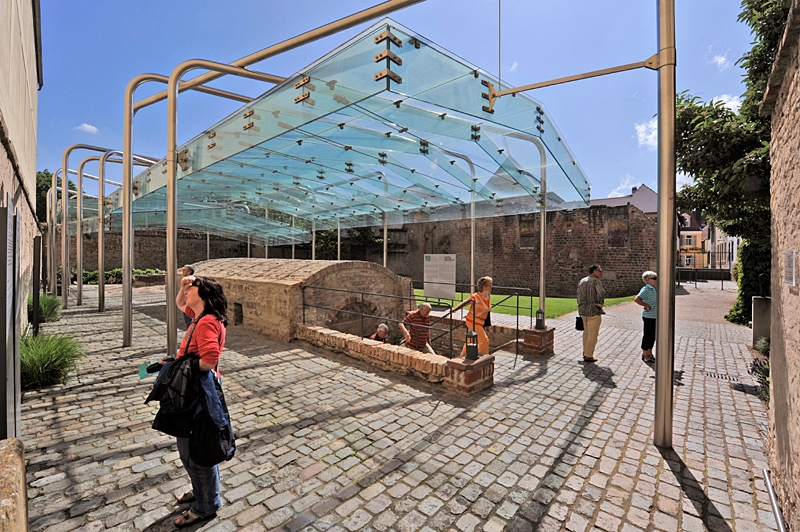
Please note our privacy policy on YouTube.
On the path to World Cultural Heritage
UNESCO–World Heritage Application

In January 2020, Prime Minister Malu Dreyer signed the World Heritage application by the SchUM cities of Mainz, Worms and Speyer. On 23 January 2020, the 1,000-page application was officially submitted to UNESCO in Paris. Since 2016, researchers in various universities, the SchUM Society of Worms, the Ministry of Education and the Arts, and the General Directorate of Cultural Heritage had been working on the details. The decision was announced on 27 July 2021: The SchUM cities had become the first Jewish UNESCO World Heritage Site in Germany.
It had been a long road to reach this point. It started in 2004 when, following a conversation with the Jewish community of Mainz and the Warmaisa Association, Michael Kissel, then mayor of Worms proposed to the State of Baden-Württemberg that he undertake an effort to have the SchUM cities added to the list of World Heritage sites. Two years later, the initiative was taken up in the government declarations and in the fall of 2012, the admission of the SchUM project into Germany’s list of proposals was proposed to the Conference of Cultural Ministers. It took until 2014 before the first hurdle was negotiated — the application for admission to the World Heritage Site list landed in fifth place among the nine applications on Germany’s list. In 2020, the State of Rhineland-Palatinate presented its nomination dossier and management plan to the Foreign Office of the UNESCO in Paris.
The SchUM Society and Slogan

In 2014, the cities of Speyer, Worms and Mainz, the Jewish community of Mainz, the Jewish religious community of the Rhineland-Palatinate and the State Association of Jewish Communities of Rhineland-Palatinate joined the State of Rhineland-Palatinate in forming an association. Its assignment it was, in conjunction with other institutions, associations and interested individuals, to further develop and present the Jewish heritage as found in the SchUM cities. Working together, educational and touristic offerings were developed that wakened interest in the SchUM cities and made them better known at home and abroad.
But above all else, people in the region became able to identify with the topic. That is why the SchUM cities formulated a slogan for promoting the application for WORLD Heritage Site status: SchUM Cities on the Rhine — a Jewish Heritage for the World. It was hoped that this would more tightly interweave the Jewish heritage with the cities of Speyer, Worms and Mainz.
SchUM as World Heritage
SchUM ties together in a unique way several generations of academic learning and tradition. In the diocesan towns on the Rhine, an active Jewish community life was developing in the 11th century. Due to their proximity to one another as well as an intense exchange between communities and their significant Talmudic schools, an unusual connection eventually developed; it is still known today under the name of SchUM. As such, it sustainably shaped the culture, religion and intellectual life of European Jewry. The acronym, SchUM is composed of the first Hebrew letters of the city names as they were known during the Middle Ages and as spelled in Latin:

Schin (Sch) = Schpira = Speyer
Waw (U) = Warmaisa = Worms
Mem (M) = Magenza = Mainz
However, SchUM is much more than an abbreviation: the testimonials of stone as incorporated in synagogues, cemeteries, and ritual baths have been preserved and archaeologically secured. Interwoven with the tangible is the intangible: scholarship, Torah commentaries, liturgical poetry, everyday customs, and myths. SchUM also represents present-day Judaism. In their unique fashion, the SchUM sites connect Jewish history to their European and global counterparts.
With the acceptance of the SchUM cities onto the list of World Heritage Sites, the number of World Heritage Sites in the Rhineland-Palatinate has climbed to five. Whoever is recognized and entered onto this list is committed to maintaining the World Heritage Site and to making it accessible to the public. Interest in the Jewish heritage of the Middle Ages is great and the SchUM sites in Mainz, Worms and Speyer are looking forward to many visitors. Preservation, tourism and mediation, interchanges on questions of the relationship between cultures and religions and the disputes within Jewish traditions and Jewish scholarship as to their meaning both past and present will be intensified, now that the SchUM cities have become World Heritage Sites.
UNESCO and theUNESCO World Heritage Convention
UNESCO is an organization of the United Nations that has taken on the challenge of advancing the collaboration between nations in the areas of science, education and culture with the goal of maintaining international peace. At this time, UNESCO numbers 193 member states. Its headquarters is in Paris.
In 1972 the UNESCO World Heritage Convention came into existence. As of 2020, the list includes 1,121 sites in 167 different countries. Getting listed depends on three underlying criteria.
The World Heritage Convention rests on various criteria that must be fulfilled in order to be recognized as a World Heritage Site:
· Uniqueness
· Authenticity (historic originality)
· Integrity (intactness)
A World Heritage Site must exhibit “Outstanding Universal Value” = OUV). Outstanding Universal Value denotes, according to §49 of the Operational Guidelines, “a cultural and/or natural importance that is so outstanding that it transcends national borders and is of importance both for present as well as future generations.”


